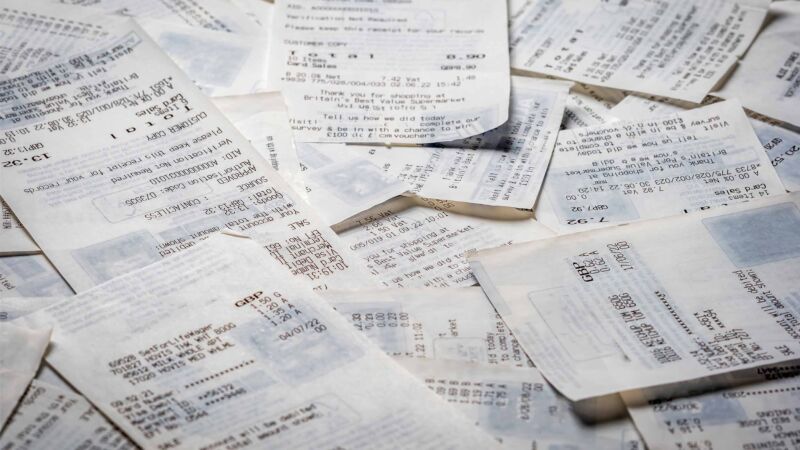Understand what indirect tax is, emphasizing the role of tax professionals, and differentiating direct and indirect taxes.
Jump to:
| What is indirect tax? |
| Types of indirect tax |
| The value of indirect tax to tax professionals |
| Differences between direct and indirect tax |
Tax planning and management is one of the primary areas accountants help their clients. Taxes are either direct tax or indirect tax. Where the amount of direct tax owing can be influenced by other factors, indirect taxes are straightforward in that their calculation is typically a predetermined percentage or rate and the cost is passed along the supply chain ultimately landing on the consumer or end user. Where tax professionals provide value to their clients by keeping current on changes and updates to taxes and helping resolve complex tax calculations that arise from cross-border or interstate transactions.
What is indirect tax?
An indirect tax is a tax passed off by the government on goods and services. It is collected by the manufacturers or sellers of goods and services from the consumer when they purchase an item or service and then paid to the government. They are often already embedded in the prices of goods and services.
Indirect taxes are also known as consumption taxes, transaction taxes, or excise taxes. They are considered regressive since they are a fixed percentage rather than a percentage of income. Indirect taxes are not refundable.
Types of indirect tax
There are several examples of indirect tax, which typically fall into one of three categories:
- Sales and services taxes
- Custom and excise duties
- Activity-based taxes
Sales and services taxes
In the sales and service tax category, indirect taxes may be seen on the final bill of sale or receipt.
Value-added tax (VAT)
Value-added tax (VAT) is added at each stage of manufacturing, production, or distribution of goods and services. This is the most common type of indirect tax globally. It is typically collected at each stage of the supply chain and may qualify for input tax credits at the early stages of the supply chain. The cost ultimately falls on the consumer or end user. Most European Union countries apply a VAT.
Countries with the highest VAT rates include Hungry, Croatia, Denmark, and Sweden.
Goods and services tax (GST)
Goods and services tax (GST) is another consumption tax that is applied to the supply of most goods and services. It is designed to replace multiple indirect taxes. Like VAT the consumer bears the GST, and input credits can be applied at early stages. GST is commonly applied in Canada, India, Australia, and New Zealand.
Sales tax
Sales taxes are applied at the final point of sale and not at each point of the supply and distribution chain. They are typically a percentage of the selling price of the goods or services. They can be applied at multiple levels of jurisdiction – country, state, and city. The U.S., for example, does not have a federal sales tax, but taxes may be applied at the state and regional levels.
States with the highest average local sales tax rates include Alabama, Louisiana, Colorado, New York, and Oklahoma.
Indirect tax software is available to assist accountants in areas such as determination and compliance. With multiple levels of indirect taxes that are applied by multiple sources coupled with the potential for input tax credits, managing indirect tax reporting is a valuable aspect of tax planning for clients.
Customs and excise tax
In the customs and excise duties category, there is a regulatory tone.
Import duties (tariffs)
Import duties, also known as tariffs, can be a direct result of geopolitical relationships and are a tool for regulating trade and protecting domestic markets. The World Customs Organization has implemented a standardized coding system, the Harmonized System, for more than 5000 commodity groups as a foundation for unified classification on customs tariffs. Over 98 % of the merchandise in international trade is classified in terms of the HS.
Excise duties
Governments use excise duties to regulate the consumption of certain types of products manufactured within their borders. Sometimes called a ‘sin tax’, they are applied to hazardous chemicals, alcohol, cigarettes, sugary drinks, and gambling. These taxes are typically aimed at influencing behaviors that have negative effects on people’s health and the taxes collected are applied toward the healthcare and support programs affected by these behaviors.
Fuel excise tax (gas taxes)
Fuel excise tax, or gas taxes, are collected by sellers at the point of purchase and included in the price. They can be applied by various levels of government resulting in federal and state fuel excise taxes being added to the price, a clear example of indirect tax. In more recent years, the incorporation of carbon emissions fees into gas prices has broadened the scope of what an indirect tax is.
Activity-based taxes
The third category, activity-based examples of indirect taxes include environmental tax and financial transaction tax. Like excise duties, activity-based examples of indirect taxes are aimed at influencing behavior.
Environmental taxes
Environmental taxes are imposed on activities that have a negative impact on the environment. They are designed to discourage pollution and encourage sustainable practices. Examples include taxes on carbon emissions, landfill waste, and certain types of pollutants. In Environmental Taxation: A Guide for Policy Makers, the OECD delivers a comprehensive overview of how environmental taxes should be developed, applied, and implemented.
Financial transaction tax (FTT)
A Financial Transaction Tax (FTT) is a levy imposed on specific financial transactions such as stock trades, currency exchanges, or certain types of financial derivatives. A small percentage of the value is paid in taxes. The levy can be passed onto the buyer, seller, or intermediary. Despite being an indirect tax generating a large revenue stream for governments, FTTs are a topic of debate with almost as many countries abandoning FTTs as there are implementing them.
View corporate tax solutions |
 |
The value of indirect tax to tax professionals
Not only do indirect taxes account for a large revenue stream for governments, but they offer an area in which accounting firms and tax professionals can demonstrate real value to their clients. Ensuring organizations properly record and remit sales and service taxes keeps companies on top of paying these taxes that they have collected on behalf of the government. Working with a tax professional, organizations can also ensure they have captured all input tax credits available.
At the customs and excise duty level, tax professionals will be assisting clients in ensuring they are meeting regulatory and compliance standards and avoiding penalties. For activity-based taxes such as environmental taxes and financial transaction taxes, tax professionals will play a vital role as these areas are continually evolving and changing with large implications on the taxpayers and their organizations.
Staying on top of indirect taxes requires tax professionals to stay up to date on changes and ensure their clients are fulfilling their remittance role and that the ultimate cost of the tax is transferred and falls on the appropriate taxpayer which is often the consumer.
Differences between direct and indirect tax
The differences between direct tax and indirect tax are important to understand. Direct tax is paid directly by the taxpayer to the government and cannot be shifted, like federal income tax. In contrast, indirect tax, such as business property taxes, can be passed on or shifted to others.
Direct taxes
- Levied on people and entities
- Are typically proportionate to the taxpayer’s income or assets
- Considered a progressive tax.
- Non-transferrable, the tax is borne by the taxpayer
- Examples include income tax, corporate tax, and property tax
Indirect taxes
- Levied on goods and services
- Are based on the value of the good or service
- Considered a regressive tax
- Transferrable, with consumers ultimately paying the tax. In the case of customs duties, excise taxes, and tariffs, the cost is embedded in the price of the product or service
- Examples include VAT, GST, customs duties, and tariffs










